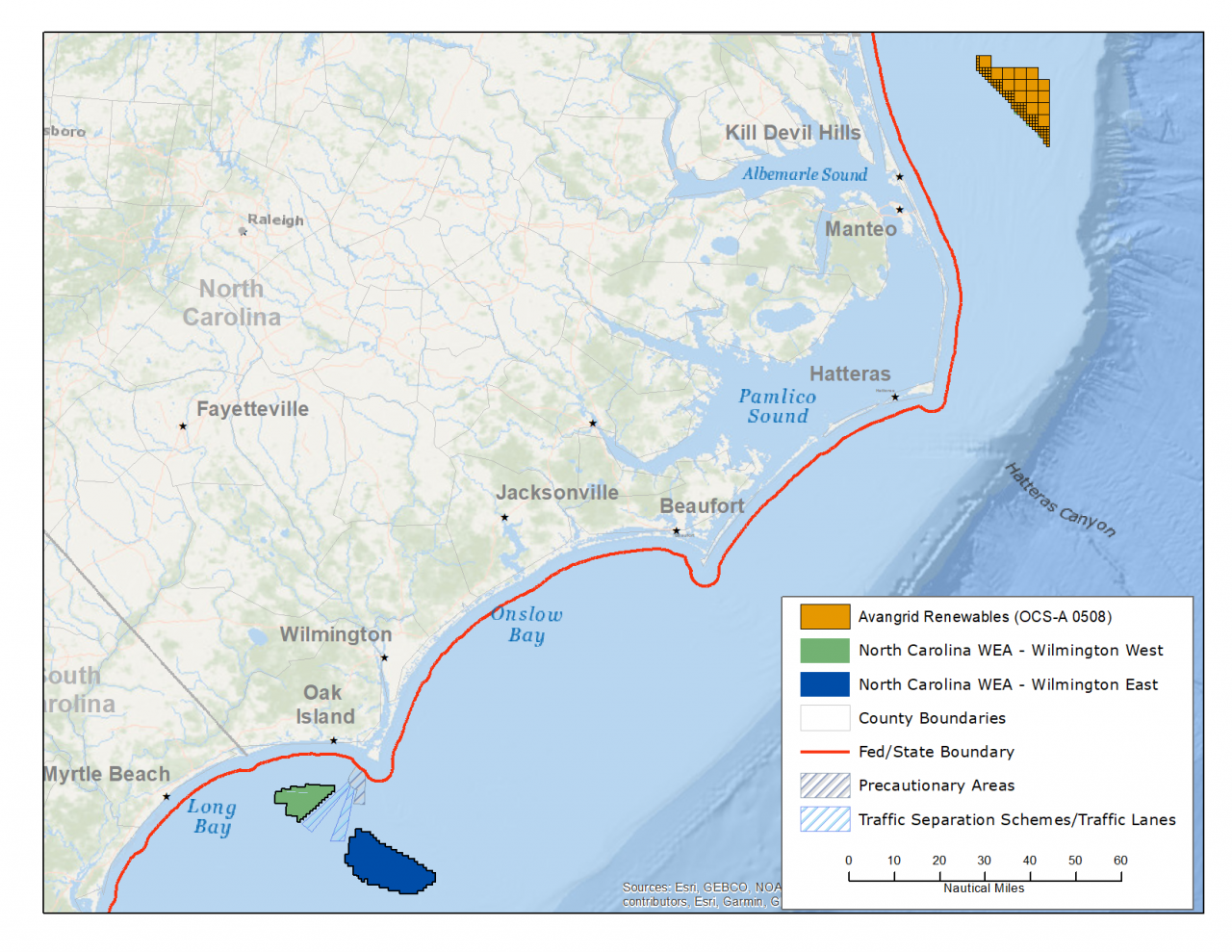
Update: The Brunswick Board of Commissioners unanimously approved the resolution during its Monday meeting.
Offshore wind turbines are back on the radar for southeastern North Carolina local governments.
Supporter Spotlight
Brunswick County’s board of commissioners will consider a resolution opposing offshore wind turbines sited fewer than 24 nautical miles of the shoreline, following the lead of a handful of its oceanfront towns, including Bald Head Island, Sunset Beach, Ocean Isle Beach and Caswell Beach.
The board is set to meet at 3 p.m. Monday in the commissioners’ chambers, Sandifer Administration Building, 30 Government Center Drive, Bolivia. The agenda is available online.
It was a consensus among the county board in 2015 not to take any action on a resolution opposing issuing wind energy leases within 33.7 nautical miles of Caswell Beach, which presented the resolution to the county at the time, according to Dec. 7, 2015, agenda meeting minutes.
The Village of Bald Head Island, which unanimously passed a resolution May 21, reignited the campaign to oppose issuing wind energy leases within 24 nautical miles of North Carolina’s shores.
The Bureau of Ocean Energy Management in August 2014 defined three Wind Energy Areas offshore of the state totaling about 307,590 acres for potential commercial wind energy development. The wind energy areas, or WEAs, are the Kitty Hawk WEA, Wilmington West WEA and the Wilmington East WEA.
Supporter Spotlight
The Wilmington West WEA starts 10 nautical miles from shore and the Wilmington East WEA begins about 15 nautical miles from Bald Head Island at its closest point and extends about 18 nautical miles.
The two Wilmington WEAs were realigned due to their proximity and shared attributes, with the planning and leasing process for the South Carolina Call Areas in 2016, according to BOEM. The Regional Carolina Long Bay Intergovernmental Renewable Energy Task Force met July 21.The meeting was held to discuss the next steps in the BOEM leasing process for establishing Wind Energy Areas off North and South Carolina’s coasts.
The resolution on Monday’s agenda for Brunswick County states that the Bureau of Ocean Energy Management is aware that wind turbines will have “adverse visual impacts” within 24 nautical miles from shore and has already addressed this issue for Virginia and Kitty Hawk. A 24-nautical-mile no-leasing buffer to protect the view has been established for both. There is also a 33. 7-nautical-mile no-leasing buffer to protect the Bodie Island Lighthouse.
After the resolution passed, Bald Head Island Mayor J. Andrew Sayre asked Sunset Beach to take the same steps, which they did, unanimously approving a similar resolution during its June 12 meeting.
In his letter to Sunset Beach, Sayre wrote the previous White House administration put a 10-year moratorium starting July 2022 on new wind energy leases, ending leasing West Wilmington WEA, and East Wilmington WEA.
“The new administration is likely to end the moratorium and a bipartisan group of NC U.S. representatives has endorsed the administration’s efforts to develop wind energy off the coast of NC,” Sayre wrote.
“The Bureau of Energy Management has not changed the location of these WEAs, which are still within the viewshed of several southeastern NC municipalities, nor fully evaluated the visual impacts,” Sayre continued. “With the likelihood of the wind energy leases in these two nearby WEAs moving forward, the Village of Bald Head Island respectfully requests that the Town of Sunset Beach adopt a similar resolution opposing the issuance of wind energy leases within 24 nautical miles of North Carolina’s shores.”
Sayre is referring to the Public Land Renewable Energy Development Act Rep. Mike Levin, D-California, reintroduced in May. He first presented the bill in 2019 to fight the climate crisis and reduce fossil fuel dependence by promoting development of wind, solar and geothermal energy on public lands.
“The climate crisis is the defining challenge of our time, and we must drastically expand renewable energy development if we are going to adequately reduce greenhouse gas emissions and mitigate the worst impacts of this crisis,” said Levin in a statement. “Our public lands have incredible potential for wind, solar, and geothermal energy development, and we must harness that potential as part of our clean energy future. My bill will expedite that critical renewable energy development, create good-paying jobs in communities across the country, and ensure we remain good stewards of our public lands. I’m proud to reintroduce this bipartisan legislation, and I look forward to advancing it as soon as possible.”
Gov. Roy Cooper also has recently pushed for the state to move forward with wind energy.
In June, Cooper signed Executive Order No. 218, a commitment to offshore wind power as the state transitions to a clean energy economy.
“Offshore wind power will help North Carolina create jobs and generate economic development while helping us transition to a clean energy economy,” said Cooper in a statement. “North Carolina’s national leadership in clean energy and manufacturing plus our highly trained workforce create a strong business environment for offshore wind supply chain and manufacturing companies.”
The order makes a case for the economic and environmental benefits of offshore wind and directs actions to help North Carolina get a part of the industry’s estimated $140 billion East Coast investment over the next 15 years.
Ocean Isle Beach Mayor Debbie Smith explained during the July 13 meeting, before the board unanimously approved a similar resolution to oppose leases less than 24 nautical miles from the shore, that the resolution was in response to Cooper’s executive order. The town has previously opposed wind turbines that would be visible from the shoreline as potentially detrimental to tourism.
“So this is reiterating again that we have concerns, asking the turbines be out of sight of land. Also, if there’s any transmission lines onshore in our community that we have input on that for any decision,” she said.








